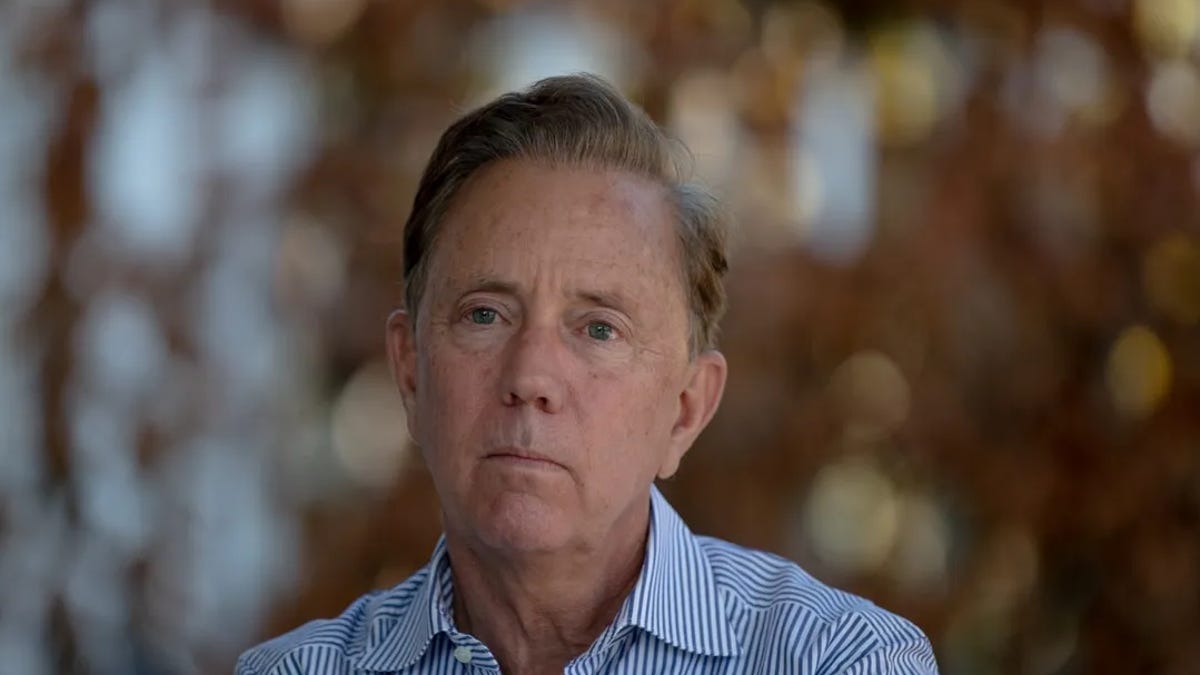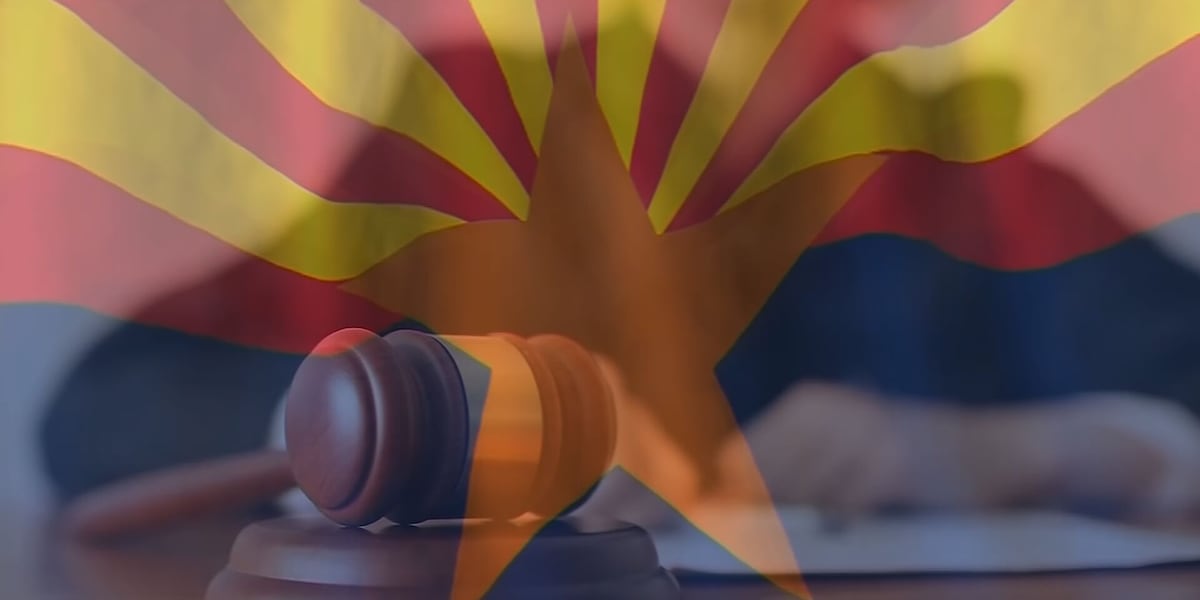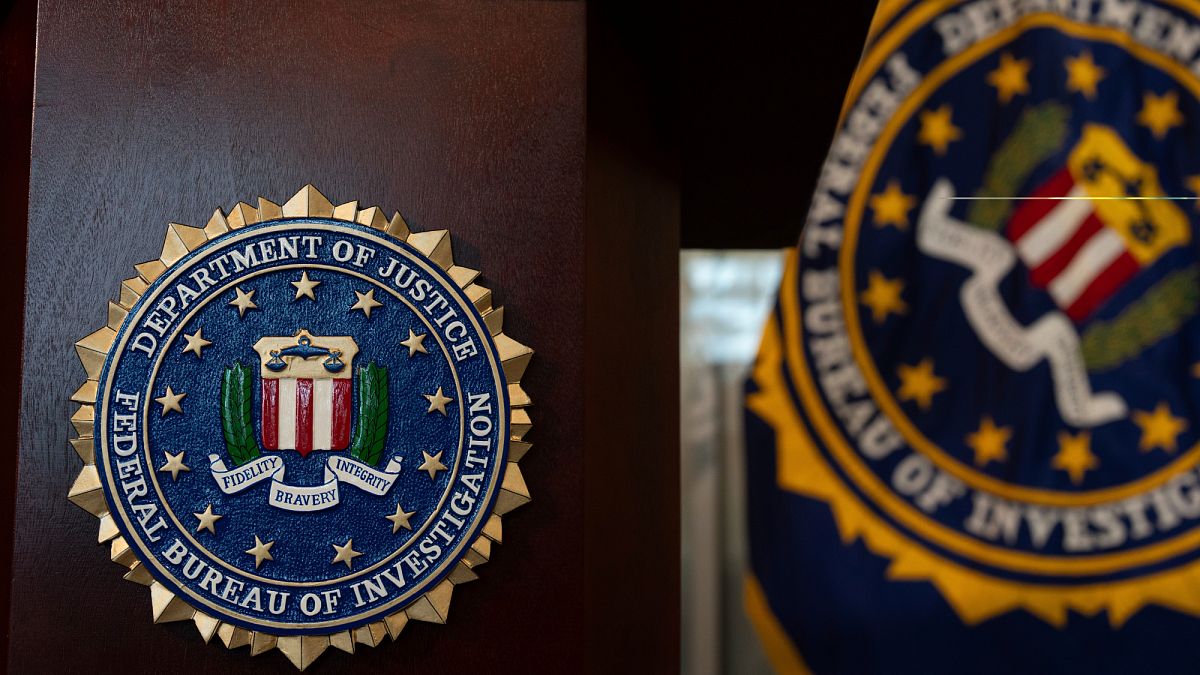Connecticut
CT budget committee approves bill charging for redacted police videos

The legislature’s budget committee voted unanimously to allow police to charge fees for redacting video from police cameras.
While police and municipalities have been able to charge fees for public records for years, the rapidly growing use of body and dashboard cameras has opened up a new world of public information that is available.
The volume of videos is large as thousands of police officers across the state in 169 cities and towns are now required under state law to wear body cameras.
Waterbury police release body cam footage of confrontation with man allegedly in possession of illegal gun and over 1,400 bags of heroin
Under the bill, the police could charge a maximum of up to $100 per hour for the working time of the officials to comply with freedom of information requests.
Police would be able to charge for “the hourly salary attributed to all agency employees engaged in providing the requested record, including their time performing necessary formatting or programming functions, but not including search or retrieval costs,” a nonpartisan bill summary says. ”They can also charge for the cost of an outside professional electronic copying service, if needed.”
The main group pushing for the bill is the Connecticut Police Chiefs Association, which represents municipal departments across the state. The chiefs say that some departments need to hire more staff to handle the requests, adding that no structure was put in place to collect fees in a multi-step process of reviewing extensive video and making redactions to avoid showing minors or potential invasions of privacy in medical cases.
“For example, a simple video that is short in duration with little or no redactions may take an hour or two to review, redact, and reproduce onto a disc or thumb drive to provide to a requestor,” the chiefs said in written testimony. “On the other hand, an incident that has multiple recordings from several officers, and contains images that are required to be redacted, may take 16-20 hours or more of staff time for it to be suitable for release. In addition, with the rapid increase in this technology, there are often additional features, equipment, and costs in which departments have had to invest to reproduce this material, yet there is no way for these costs to be offset by reasonable fees.”
Providing a one-page accident report was simple in the past, but the videos can require special computer software and the ability to blur out the faces of minors.
But the state’s Freedom of Information Commission and the American Civil Liberties Union of Connecticut are concerned that citizens could be charged too much for public information that they have a right to obtain.
“The commission believes that any fee structure should be reasonable and that records should be provided at the least cost,” said Colleen Murphy, executive director and chief counsel of the FOI Commission. “The fees should not impose an unnecessary financial barrier to obtaining access to public records to which the public is entitled.”
The ACLU agrees.
“The ability to shed sunlight on government action through open records requests is essential to holding police accountable and to preventing state-sanctioned discrimination, abuse, and mismanagement,” policy counsel Jess Zaccagnino told lawmakers in written testimony. “We believe this bill would stifle people’s accessibility to information they have a right to obtain by charging people fees for records created by police-worn body cameras and dashboard cameras. The public should never have to pay to access records kept by the government, and that includes recordings captured by police body and dashboard cameras.”
But Betsy Gara, executive director of the Council of Small Towns, supports the idea because towns are “facing substantial costs” in trying to comply with the law.
“In addition to storing and retrieving such recordings, public agencies must redact certain information from recordings prior to disclosure, such as images containing nudity and images of an identifiable minor,” Gara said in written testimony. “This may involve blurring or blocking out certain content or removing sound.”
Patrick Raycraft / Hartford Courant
All sworn members of Hartford’s police department have been equipped equipped for years with body cameras.
The support for body cameras among police and the public has grown steadily over time. In 2015, the legislature’s public safety committee took the first steps by approving body cameras in a pilot program in three volunteer communities statewide after major clashes between police and individuals ranging from Ferguson, Mo., to Staten Island led to the deaths of Black men that became nationally known.[cq comment=”
At the time, then-Sen. Eric Coleman, a Bloomfield Democrat, raised concerns about images regarding sexual assaults that might be deemed by some as an invasion of personal privacy.
“One of my friends had a baby in the driveway, and if that was me, I would want the camera to be off,” Rep. Lezlye Zupkus, a Prospect Republican, said at the time.
Since police departments are independent in Connecticut, there has been a wide range of experiences with the cameras. Milford, for example, has had cameras since 2011, while officers in some other towns did not have cameras until relatively recently.
Christopher Keating can be reached at ckeating@courant.com

Connecticut
Connecticut expands medical debt relief to 100,000 more residents: Who is eligible

More than 100,000 Connecticut residents will soon receive letters notifying them of medical debt relief, according to a community announcement.
Gov. Ned Lamont announced May 21 that the second round of an initiative, launched last year in partnership with the nonprofit Undue Medical Debt, is underway. The program aims to eliminate medical debt for residents who meet specific income criteria.
Undue Medical Debt negotiates with hospitals and other providers to eliminate large portfolios of qualifying medical debt. To qualify, residents must have an income at or below four times the federal poverty level or have medical debt that is 5% or more of their income.
In this round, the state invested $575,000 of American Rescue Plan Act funding. Undue Medical Debt was able to negotiate with a secondary market partner to acquire and eliminate more than $100 million in qualifying medical debt. The first round, which occurred in December, eliminated approximately $30 million in medical debt for 23,000 residents.
Those who have been identified for relief will receive a branded envelope and letter from Undue Medical Debt in the mail over the next several days. (To view a sample of what this letter looks like, click here.)
“Medical debt causes additional anxiety and stress when individuals and families are coping with potentially life-threatening health situations,” Lamont said. “Over the next few days, more than 100,000 Connecticut residents who have been struggling to pay their medical bills will feel relief when they receive letters in the mail notifying them that their debt has been erased. I am hopeful that additional medical partners will soon sign onto this program to help more Connecticut families through further rounds of this initiative.”
Allison Sesso, CEO and president of Undue Medical Debt, expressed gratitude for the state’s continued partnership in providing medical debt relief.
“The erasure of these debts of necessity wouldn’t be possible without community-minded leaders like Governor Lamont and his team, who believe medical debt should not be a hindrance to seeking needed care,” Sesso said. “We look forward to continuing our work in the state so families can seek healthcare with dignity.”
State Rep. Cristin McCarthy Vahey, co-chair of the legislature’s Public Health Committee, also praised the initiative.
“Medical debt can be a crippling burden on patients, especially those who are already struggling to make ends meet,” Vahey said. “Erasing medical debt for an additional 100,000 residents will greatly ease the stress they are facing and will free them up to focus on their health and well-being. Thank you to Governor Lamont and Undue Medical Debt for their leadership on this innovative program.”
There is no application process for this relief, as the debt erasure occurs through the purchase of large, qualifying bundled portfolios of debt from participating partners like hospitals and collection agencies.
Lamont plans to continue partnering with Undue Medical Debt for further rounds of medical debt cancellation. The governor and the Connecticut General Assembly have enacted legislation that makes $6.5 million in ARPA funding available for this initiative.
This story was created by reporter Beth McDermott, bmcdermott1@gannett.com, with the assistance of Artificial Intelligence (AI). Journalists were involved in every step of the information gathering, review, editing and publishing process. Learn more at cm.usatoday.com/ethical-conduct or share your thoughts at http://bit.ly/3RapUkA with our News Automation and AI team.
Connecticut
How to watch the Connecticut Sun basketball game against the Atlanta Dream May 25

The Connecticut Sun will take on the Atlanta Dream on the road May 25.
Atlanta finished the 2024 regular season with a record of 15-25, good for fourth place in the WNBA’s Eastern Conference. Following the 2024 regular season, Atlanta lost in the first round of the playoffs to the New York Liberty 2-0.
The Dream’s roster that was announced prior to the 2025 regular season featured a blend of experience and emerging stars. One of the highlights of that roster was Brittney Griner. Her extensive list of career highlights includes 10 WNBA All-Star Game selections and three All-WNBA First Team selections
Here’s how to watch the Connecticut Sun game against the Atlanta Dream May 25.
How to watch and stream the game
The game will be broadcast live on NBC Sports Boston. The game can also be watched on the WNBA’s website and streamed on WNBA League Pass.
Venue and start time
- Start time: 3 p.m. ET
- Venue: Gateway Center Arena @ College Park, Atlanta, Georgia
Connecticut Sun 2025 regular season schedule
Record: 0-2
- May 18: Washington Mystics (L 85-90)
- May 20: Las Vegas Aces (L 62-87)
- May 23: at Minnesota Lynx, 7:30 p.m. ET
- May 25: at Atlanta Dream, 3 p.m. ET
- May 27: Dallas Wings, 7 p.m. ET
- May 30: at Indiana Fever, 7:30 p.m. ET
- June 1: at New York Liberty, 3 p.m. ET
- June 6: Atlanta Dream, 7:30 p.m. ET
- June 8: at Washington Mystics, 3 p.m. ET
- June 15: Chicago Sky, 12 p.m. ET
- June 17: at Indiana Fever, 7 p.m. ET
- June 18: Phoenix Mercury, 7 p.m. ET
- June 20: Dallas Wings, 7:30 p.m. ET
- June 22: at Golden State Valkyries, 8:30 p.m. ET
- June 25: at Las Vegas Aces, 10 p.m. ET
- June 27: at Seattle Storm, 10 p.m. ET
- June 29: at Minnesota Lynx, 7 p.m. ET
- July 6: Las Vegas Aces, 4 p.m. ET
- July 9: Seattle Storm, 11 a.m. ET
- July 11: at Seattle Storm, 10 p.m. ET
- July 13: at Los Angeles Sparks, 6 p.m. ET
- July 15: Indiana Fever, 8 p.m. ET
- July 24: Los Angeles Sparks, 7 p.m. ET
- July 27: Golden State Valkyries, 1 p.m. ET
- July 28: Seattle Storm, 7 p.m. ET
- August 1: New York Liberty, 7:30 p.m. ET
- August 3: New York Liberty, 1 p.m. ET
- August 5: at Phoenix Mercury, 10 p.m. ET
- August 7: at Los Angeles Sparks, 10 p.m. ET
- August 10: at Las Vegas Aces, 9 p.m. ET
- August 11: at Golden State Valkyries, 10 p.m. ET
- August 13: Chicago Sky, 7 p.m. ET
- August 17: Indiana Fever, 1 p.m. ET
- August 19: at Washington Mystics, 7:30 p.m. ET
- August 21: Washington Mystics, 7 p.m. ET
- August 23: at Chicago Sky, 4 p.m. ET
- August 25: at New York Liberty, 7 p.m. ET
- August 27: at Dallas Wings, 8 p.m. ET
- August 30: Minnesota Lynx, 7 p.m. ET
- September 1: Atlanta Dream, 1 p.m. ET
- September 3: at Chicago Sky, 8 p.m. ET
- September 6: Phoenix Mercury, 1 p.m. ET
- September 8: at Atlanta Dream, 7:30 p.m. ET
- September 10: Atlanta Dream, 7 p.m. ET
Connecticut
This is how much untreated wastewater went into the Connecticut River last year

There was a drastic decline in the amount of untreated wastewater that overflowed in the Connecticut River last year compared to 2023, according to a new report from the Massachusetts Department of Environmental Protection.
The report, which came out last week, showed that 543 million gallons overflowed into the the Connecticut River last year across 12 days with weather events, compared to close to 1 billion gallons in 2023.
Some communities in the Pioneer Valley constructed their sewer systems to also accept stormwater. During heavy rains, the stormwater and sewage overwhelm some wastewater treatment plants and flow — untreated — into nearby bodies of water. The event is called a combined sewer overflow (CSO), and officials issues warnings afterwards to avoid affected water bodies for 48 hours because of pollutants and bacteria.
“In 2023, we had extremely heavy rainfall over the summer and into the winter which resulted in several catastrophic floods throughout the Connecticut River watershed. In contrast, 2024 was a drought year and there was significantly less rainfall,” Ryan O’Donnell, water quality program manager at the Connecticut River Conservancy, wrote in an email.
The amount of overflow depends on the amount of rainfall and snowmelt that occurs, the MassDEP report says.
“Wetter weather conditions, particularly those with significant precipitation, increase the likelihood of CSO discharges,” the report says.
The reduction of untreated wastewater entering in the Connecticut River in 2024 because of combined sewer overflows can also be attributed to the opening of Springfield’s York Street Pump Station in 2023.
The project has “doubled the capacity of our old wastewater pump station and can pump more combined flow to the wastewater treatment plant during storm events,” said Jaimye Bartak, communications manager for the Springfield Water and Sewer Commission.
The commission spent $137 million on the pump station project.
The commission, she said, has spent more than $300 million over the last three decades to reduce and mitigate combined sewer overflow discharges into the Chicopee and Mill rivers and their parent, the Connecticut River.
The commission also has collaborated with other communities to reduce the discharges in the Connecticut River by approximately half, she said in an emailed statement.
“Much CSO investment remains to be done in the region, but we are proud of that progress and it is evident in the increased recreation on and enhanced development along the Connecticut River,” she said.
Wastewater systems across the state are required to notify the public anytime sewage discharges and overflows into Massachusetts water bodies.
Communities, like Holyoke and Chicopee, are also in consent agreements with the federal Environmental Protection Agency to completely eliminate their combined sewer overflows — a multimillion dollar undertaking.
Holyoke, which entered into a consent agreement with the U.S. Environmental Protection Agency in 2023, is working on sewer separation projects to reduce its overflows into the Connecticut River.
Joshua A. Garcia, Holyoke’s mayor, said at a groundbreaking for the River Terrace sewer separation project on Monday, that local governments have to address these issues incrementally.
Garcia said the project is very expensive, but the city can’t keep ignoring the issues. “We have to start moving toward the end goal,” he said.
Chicopee has been in a similar agreement with the EPA for over two decades.
By 2022, Chicopee had spent $225 million on its effort to separate storm drains from sewer pipes, which was a part of its EPA order that requires the city to stop dumping raw sewage into the rivers every time it rains. At the time, the project still needed $300 million to complete.
In addition to fewer discharges of untreated wastewater in the Connecticut River in 2024, there were also fewer discharges in the Mill and Chicopee rivers, the report says. The Mill River went from having 37 million gallons in discharge in 2023 to 18 million the year following. The Chicopee River went down from 23 million gallons to 11 million gallons.
Despite the local decreases, the overall volume untreated wastewater discharge increased in Massachusetts, jumping up from 7.2 billion gallons to 7.6 billion gallons of sewage that entered water bodies across the state.
Particularly, the Massachusetts Bay — on the eastern part of the state — saw an increase in combined sewer overflow discharge from 1.3 billion gallons in 2023 to 1.8 billion gallons in 2024.
-

 Education1 week ago
Education1 week agoVideo: Opinion | We Study Fascism, and We’re Leaving the U.S.
-

 Technology1 week ago
Technology1 week agoLove, Death, and Robots keeps a good thing going in volume 4
-

 News1 week ago
News1 week agoAs Harvard Battles Trump, Its President Will Take a 25% Pay Cut
-

 Culture1 week ago
Culture1 week agoBook Review: ‘Hunger Like a Thirst,’ by Besha Rodell
-

 Technology1 week ago
Technology1 week agoMeta asks judge to throw out antitrust case mid-trial
-

 Politics1 week ago
Politics1 week agoRepublicans say they're 'out of the loop' on Trump's $400M Qatari plane deal
-

 World1 week ago
World1 week agoCommissioner Hansen presents plan to cut farming bureaucracy in EU
-

 Movie Reviews1 week ago
Movie Reviews1 week agoClassic Film Review: ‘Mad Max: Fury Road’ is a Lesson in Redemption | InSession Film



















